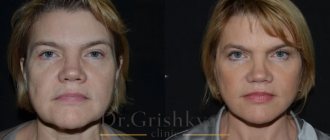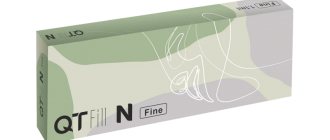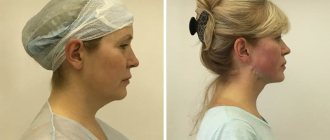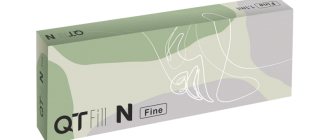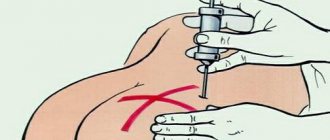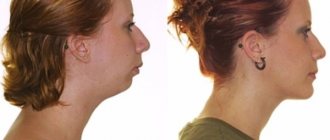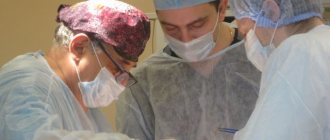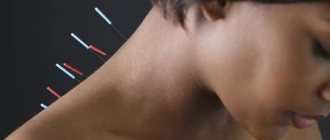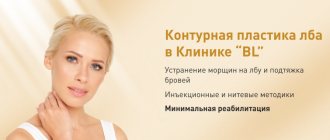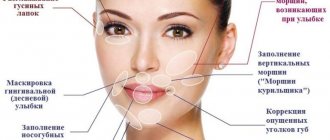Botulinum toxin type A preparations are better known in our country as Botox and are firmly associated with getting rid of early wrinkles. But there are a number of inaccuracies here. Firstly, Botox is not a group of drugs or an active substance, but a trade name for a very specific drug, which, nevertheless, has become a household name, that is, it is used to refer to all similar drugs in general. And secondly, the range of tasks for such tools is much wider!
What are the advantages of botulinum therapy with Botulax in the treatment of bruxism?
- Myorelaxation Complete relaxation of tight masticatory muscles and elimination of painful spasm.
- Long-lasting effect After one procedure, the relaxing effect lasts for several months.
- Quick relief from pain The drug begins to act immediately and gently relieves stress and discomfort.
- Point effect The medicine is administered to strictly defined points and does not affect the functioning of other facial structures.
- Getting rid of a bad habit You will quietly get out of the habit of clenching your jaw and aggravating the consequences of bruxism.
- Maximum safety The drug does not cause addiction and is completely eliminated from the body.
There is a solution for each case!
1 procedure
1 Botulax procedure Gentle and safe effect For mild cases of hypertonicity of the masticatory muscles RUB 15,000. 15,000 rub.
3 procedures
A course of 3 Botulax procedures Gentle and safe effects For moderate and severe stages of hypertonicity RUB 35,000. 35,000 rub.
Botulinum therapy can help if you have a habit of clenching your jaw tightly and grinding your teeth, you suffer from increased abrasion of enamel and destruction of crowns.
Symptoms of hypertonicity of the masticatory muscles and bruxism
- the chewing surfaces of the teeth become worn and flat (the cutting edges disappear),
- tooth enamel chips, wedge-shaped defects appear, fillings fly out, teeth quickly decay, become loose, gums hurt,
- you experience discomfort when opening your mouth, while eating or yawning - there are clicks, crunching sounds,
- you or your loved ones notice that you are grinding your teeth - the characteristic grinding appears mainly at night (the so-called “night bruxism”), when it is difficult for a person to control himself during sleep,
- cramps the jaw - you cannot fully open or close your mouth, the jaw seems to be blocked,
- it is difficult for you to keep your mouth open for a long time, overexertion and pain appear during bruxism,
- when talking or chewing, you feel that your facial muscles are “clogged”, tired,
- when you are angry, tense or just working in concentration - your mouth is tightly closed, your lips are pursed, your teeth are closed, you are literally clenching your jaw,
- there are problems with your bite – your teeth don’t fit together correctly, your jaws are misaligned relative to each other, causing you to bite your cheeks or tongue,
- after concentrated work or under stress, you often have a pressing sensation in your temples, pain and dizziness,
- you notice ringing and noise in your ears,
- Over time, the lower half of your face has become visually square, heavy,
- there are problems with posture - you are slouched, your lower back hurts, your neck is stiff, one shoulder is higher than the other.
If you find one or more signs in yourself, then this is a reason to consult a specialist for medical help. And the first step is a comprehensive diagnosis and search for the causes of hypertension.
We approach the treatment of bruxism comprehensively! We carry out in-depth diagnostics, find the exact cause of facial muscle spasm and eliminate it using advanced methods - safely and with high results.
Free consultation
Chin Botox (botulinum therapy from an experienced cosmetologist)
Problem assessment and patient selection
Patients do not notice these movements; they can occur either at rest or during any facial expression. Any movement of the lower lip that causes the corners of the lips to turn out, such as when pronouncing words beginning with the letter F, usually increases wrinkling of the chin. For some, this may occur after chin surgery, as secondary hyperkinesis, or during bite correction with various braces.
Since not all of the bony attachments of the mentalis muscle fibers can be repositioned and secured exactly as they were before the chin implant was placed, the contracting mentalis muscle becomes improperly attached to the bone and produces abnormal movements either at rest or with each movement of the mentalis muscle.
In another group of people, the hyperkinetic mentalis produces a pronounced deep labiomental fold between the lower lip and the prominence of the chin, which widens the anterior projection of the chin. This looks like a sign of sharpening or aging, because with age, the tip of the chin can rise and project forward, forming the so-called. "witch's chin" Men do not have such problems.
A little functional anatomy
Dynamic wrinkles and wrinkling of the surface of the chin or the appearance of a deep labiomental fold are caused by a hyperkinetic mentalis muscle. The mentalis is a short, strong, cone-shaped digastric muscle that extends deep to the depressor lobii inferioris along the anterior part of the mandible on either side of the midline at the level of the fessa canina and the roots of the lower incisors. It runs down, connecting the 2 muscle bellies, towards the midline and is woven by numerous fibrous fibers into the skin of the upper part of the chin on both sides of the frenulum of the lower lip. Some of these fibers intertwine superficially with the fibers of the orbicularis oris and laterally with the fibers of the depressor labiiinferioris. Mentalis lifts the skin at the base of the lower lip line, helping to strengthen the lip at the gum line. The mentalis helps other reciprocal synergistic perioral muscles (such as the depressor labiiinferioris and orbicularis oris) to lower, protrude and evert the lower lip during drinking, eating and speaking. This maneuver also enhances the appearance of the labiomental fold.
Mentalis also wrinkles the skin of the chin when it contracts when expressing doubt, dissatisfaction, sadness or irritation.
With age, the loss of dermal collagen, elasticity and soft tissue support, as well as changes in bone structure and a decrease in the amount of subcutaneous fat in this area, can increase the appearance of uncontrolled chin movements and rippling. cobblestone effect. In most patients, when frowning dissatisfied and expressing sadness, doubt or anger, the depressor angli oris contracts simultaneously with the mentalis, so the marionette lines become just as noticeable. Therefore, for many patients it is recommended to treat m. depressor angulisoris and m.mentalis in one session. Dilution
When working with mentalis, lateral diffusion of ABotx A leads to the risk of weakening of depressor labii inferioris and oral incompetence (impaired speech, smiling, laughter, fluid intake and food intake). Highly concentrated botulinum toxin needs to be corrected. The dilution should be 1 ml. physiological solution.
Dosages for Botox injections, correction of problems.
Hyperactive mentalis can be relaxed by injecting 3-4 units. botulinum toxin deep into the muscle, one point on each side of the midline of the chin. This two-point injection technique is especially suitable for patients with a cleft chin or a wide, square chin. Injections are best performed in a semi-sitting or upright position. Patients with a narrow, rounded or pointed chin have a more centrally located m.mentalis. For such patients, a single point injection technique is more appropriate. Deep into the area of the apex of the chin 4 - 6 units. After the injection, a light massage is possible because... Strong massage movements can lead to diffusion of the drug.
Results and results of chin botox
Relaxation of the hyperkinetic muscle fibers of the mentalis can reduce or improve unwanted movements and wrinkling of the chin when it is at rest, speech or emotional expression. Relaxation of the mentalis can also lower the anterior projection of the skin of the chin slightly below, thereby smoothing the labiomental fold and possibly everting the lower lip. When the transverse labiomental fold is particularly deep and resistant to botulinum therapy, then it is recommended to lift it with fillers. ABotx injections are also indicated for patients after chin plastic surgery and bite correction. The effect after Botox A injections lasts 4-6 months.
Complications and side effects of botulinum therapy for the chin
When injections of anabotulinum toxin A (Botox, Disport, Kseomin) are placed too high, closer to the lower part of the lip i.e. above the transverse labiomental fold, then orbicularis oris and even depressor labii inferioris may be weakened, especially when using a 2-point injection technique. Diffusion of botulinum toxin into the depressor labii inferioris and orbicularis oris can also occur with a strong massage immediately after the injection. If the orbicularis oris or depressor labii inferioris is already under the influence of the toxin, the oral sphincter will relax, oral competence will decrease, and cheek motor movements will weaken. This can lead to the patient having difficulty pronouncing letters such as “b” “p” “v” “f” “o” “yu”, as well as some sounds. An asymmetrical smile may also appear as a result of an adynamic or synkinetic lower lip. Too much botulinum toxin results in an inability to press the lower lip firmly against the teeth or cup, causing difficulty in eating and drinking liquids.
Botulinum toxin treatment should always include a Mentalis injection.
Injections of botulinum toxin into the lower third of the face should only be performed by an experienced botulinum therapist!!!
Sign up for a consultation and procedure online at the ESTELAB clinic here
The main causes of bruxism in adults and jaw strain
- psycho-emotional reasons: nervous overstrain, prolonged stress, difficult experiences of situations,
- dental reasons: prolonged absence of teeth, malocclusion, diseases of the temporomandibular joint, complete or almost complete absence of teeth, inconvenient and poorly made crowns and dentures, fillings that are too high, injuries to the dental system,
- disorders of the musculoskeletal system: injuries and curvature of the spine, poor posture, asymmetry in the work of the core muscles,
- neurological causes: epilepsy, birth trauma, brain and central nervous system damage,
- other reasons: taking certain medications, smoking, abuse of caffeine-containing drinks.
“We always take a comprehensive approach to solving problems of hypertonicity of facial muscles. First of all, we look for causes from the maxillofacial apparatus - we carry out a full diagnosis and examination, evaluate the functioning of the masticatory muscles, identify the patient’s characteristic habits and collect a medical history. If necessary, we refer the patient to specialized specialists - a neurologist, psychotherapist, etc. It is very important to cure hypertonicity - at least so that the patient in the future can safely begin high-quality dental restoration: implantation, prosthetics or treatment.”
Aida Vladimirovna Jutova, implant surgeon, periodontist, work experience of more than 10 years make an appointment
Botulinum therapy as one of the methods for treating hypertension and bruxism
Botulinum toxin type A, which is used in medicine and cosmetology, is able to relieve spasms and relax overstrained muscles, specifically reducing their activity or immobilizing them completely. But not forever, but only for a certain period of time - during this time the body adapts to new circumstances and stops overstraining a certain area. That is, the therapeutic effect for a diagnosis such as “bruxism” lasts for a long time, which is confirmed by numerous reviews from patients.
How it works?
Botulinum toxin type A is a neurotoxin produced by the bacteria Clostridium botulinum. It blocks nerve impulses from the central nervous system to muscle fibers. That is, in fact, the drug paralyzes a certain muscle without transmitting motor commands from the brain to it.
In medicine and cosmetology, it is used in ultra-small and highly purified forms - that is, it is not poisonous or toxic to the body!
The drug is injected into clearly defined points in order to affect only a specific muscle and not affect the work of others. The dosages are harmless, and the blocking is reversible. Over time, the drug is completely eliminated from the body - usually this takes from 5 to 7 months. Gradually, neuromuscular conduction in the area is restored, and mobility returns to the muscle - but since it has “rested,” the spasmodic fibers are smoothed out, and the body adapts and normalizes the load.
Botulinum toxin only relieves hypertonicity and allows the muscle to relax. This is the basis of its well-known cosmetic effect - smoothing out wrinkles by blocking the work of facial muscles. That is, it is wrong to think that you can “pump yourself up” with botulinum toxin preparations - they do not in any way increase the volume of soft tissues.
To relieve excess tension in the masticatory muscles, we use the drug Botulax for intramuscular injection with 99% active substance content, thereby increasing the speed of onset and duration of the therapeutic effect. And thanks to the high degree of purification of the drug, the risk of adverse reactions is minimized. The dosage and course are selected by the doctor strictly individually!
Indications and contraindications for botulinum therapy of masticatory muscles
Indications
- pain in the temporomandibular joint area,
- limited mouth opening,
- clicking, crunching, discomfort when moving the lower jaw,
- pathological abrasion of enamel,
- overstrain of the masticatory muscles, their soreness and heaviness,
- preparation for implantation, classical prosthetics (especially veneers), orthodontic treatment.
Contraindications
- pustular skin lesions, ulcers, acute infection in the area of the masticatory muscles,
- viral and infectious diseases in the acute stage,
- neuromuscular diseases (myasthenia gravis),
- constant use of certain medications and antibiotics,
- pregnancy and lactation period,
- bleeding disorders,
- diabetes,
- allergic reactions to the components of the drug,
- oncology and severe mental disorders.
Causes of the disease
The main cause of the disease is systemic stress. The pathology most often occurs in people who often experience frequent stress or psychological disorders, and experience an excited state before going to bed. Also factors in the occurrence of the disease can be disorders of the masticatory muscles, malocclusions, enuresis, somnambulism and periods of respiratory arrest during sleep.
Treatment of bruxism is mandatory, as the disorder leads to loosening of teeth, abrasion and chipping of tooth enamel, as well as damage to dental crowns. The advanced form of the disease can also change the appearance of the face: the lower jaw becomes more protruding and heavy, and the shape of the face becomes more square.
Main stages of treatment
Step 1. Preparation for the procedure
A doctor, for example, an implant surgeon or an orthopedist, may refer you to the botulinum therapy procedure for comprehensive preparation before installing implants or dentures. But you can also contact your dentist yourself with complaints about the symptoms of dental bruxism. On the recommendation of a doctor, after consultation and diagnosis, you can begin the injection course.
No complicated preparation is required. 2-3 days before the procedure, it is advisable to eliminate alcohol and reduce the consumption of tea, coffee and energy drinks, as well as stop taking blood thinning medications and antibiotics.
Experienced doctors who follow safety precautions! Our specialists have undergone appropriate training, are certified and accurately calculate the dosage of the drug. We carry out treatment carefully, safely and with results!
Sign up
Step 2. Administration of the drug
The procedure itself takes on average 20 minutes. The doctor conducts a follow-up examination and marks points for drug administration.
The doctor takes the ampoule out of the refrigerator and opens the disposable syringe with the medicine in front of you - this way you will make sure that the storage conditions and sterility of the drug are observed. How many units of Botox are needed for bruxism? The specialist will calculate the dose individually, based on the severity of the symptoms, and divide it into 3-4 parts - that is, you will be given several small injections in different areas of the muscle. For injections, disposable sterile syringes with thin needles are used, so the procedure is almost painless. But for greater comfort, the injection site can be numbed.
Step 3. Rehabilitation period
The drug begins to act immediately, but gains maximum strength gradually - over about 10-14 days, during which the spasmodic area completely relaxes. At this time, it is undesirable to overheat and overcool the problem area: that is, you will have to limit physical activity, trips to the bathhouse and sauna, as well as to the pool.
It is also important in the first days to touch your face as little as possible and not to steam or massage the injection sites.
The effect of the drug lasts up to 7 months, but may weaken faster depending on individual characteristics. Your doctor will tell you at your follow-up appointment whether you need a repeat course.
Reviews for Botox in the chin
Elena
I've heard a lot of good and bad things about using Botox. I seriously thought about correcting my appearance after 30. When visiting the clinic, the doctor suggested doing a chin correction. The procedure seems simple, but it still needs to be carried out by specialists.
Victoria
The friends decided to go to a cosmetology clinic for rejuvenation. I looked at the results and decided that I needed to undergo this procedure too. There were strong folds in the chin area, and after the procedure they stretched. The effect lasted for several months.
Angelina
The younger sister was getting married. In general, there are a lot of photographs with younger girls in the background. I went to the clinic based on recommendations. The effect appeared after a few days. I couldn’t immediately believe that this was possible, but the result became even better after a week. The photos turned out quite good.
Veronica
Botox is poison. I was immediately warned about this at the clinic. During the procedures, a local anesthetic was used, but the pain was quite severe. I was pleased with the result. The effect disappeared after 5 months. I went for the repeat procedure without fear.
Nastya
Over time, the chin began to lose its outline. Then folds began to appear. I decided to go to a clinic with trusted cosmetologists. They immediately explained to me that the effect would not last forever. After 6 months you will have to repeat it again to maintain the achieved result.
Marina
I spent a long time looking for various information on how to correct my appearance. I rejected surgical methods immediately. What remains is Botox, which is not associated with mechanical effects. Injections are made with a thin needle, at this point the injection point disappears. The result appeared after a few days.
Diana
Folds and wrinkles began to appear in my chin area after I turned 35. Before that I used different cosmetics, but over time the effect became less. Botox injections were performed at a clinic recommended by a friend. The procedure is a little painful, but the result appeared on the second day.
Mia
I didn’t think that I would have to carry out such a procedure. But over the years I began to look at my photographs and notice changes. They became very strong, I had to see a cosmetologist. The procedure took about two days. After this there was a slight swelling, but it went away. The result lasted about 4 months, I was very pleased.
Disadvantages of treating bruxism with Botulax
It is important to choose an experienced, certified doctor who has trained and has official approval for botulinum toxin injection therapy - this is a rather complex procedure with its own subtleties. If the rules of storage, selection of dosage and administration technique are not followed, complications may occur. And if hematomas, bruises or slight swelling basically go away on their own, then difficulties with swallowing and chewing should be eliminated together with a doctor.
Our doctors have been trained and certified - treating hypertonicity with botulinum therapy in our clinic is completely safe
Why is botulinum therapy not enough to eliminate hypertension?
You need to understand that Botox treatment in dentistry, like orthopedic treatment of bruxism (that is, the manufacture of special protective mouth guards for teeth during bruxism), is only an additional, and not an independent method. Botulinum therapy protects against the consequences of muscle strain - that is, visible relief will actually occur after administration of the drug. The spasm will go away, the muscles will relax, you will stop involuntarily clenching your jaw and thereby injuring your teeth. But as soon as the effect of botulinum toxin wears off, the problem may return, albeit to a lesser extent.
Of course, if it was just a formed habit based on nervousness, and the causes of bruxism are psychosomatic or neurological, then during treatment you have a good chance to completely get rid of it. But if the source lies in other pathologies and disorders, then you also need to address them: take care of your posture, solve bite problems, restore damaged teeth, replace low-quality dentures, etc. And botulinum therapy will become an effective comprehensive measure.
When to perform the procedure
A very popular, but very controversial question: at what age will the use of Botox be the safest, but most productive? Many people believe that correcting or changing the shape of the face in this way is an exclusively age-related procedure and should be done only when the external signs of aging can no longer be hidden by any cosmetic products.
Reasoning in this way, women make the main mistake - they waste time. Facial muscles lose their natural elasticity with age, and the skin, under the influence of multiple external factors, also undergoes irreversible changes. Therefore, correction of facial contours with Botox in this case may not have the expected effect or its duration will be much shorter.
Corrective facial procedures using Botox can be performed starting from the age of 25. At this time, the skin has not yet lost its elasticity and is easily amenable to cosmetic modeling.
Contrary to the popular belief that the use of botulinum toxins in cosmetology negatively affects health in general, this method of rejuvenation has earned considerable and justified popularity.
Why are mouthguards needed for bruxism?
Another additional way to treat hypertonicity of the masticatory muscles in adults is to wear a special protective mouth guard (they are also called a “mouth guard” or “bruxism trainer”). These are plastic and dense overlays for teeth, which are worn mainly at night, and in case of severe symptoms, worn during the day. They are made from hypoallergenic materials in a dental laboratory individually for the patient or at the factory, if we are talking about mass production.
But this is also an auxiliary measure - a mouth guard helps muscles relax, protects against tooth wear and the consequences of bruxism, but does not remove the cause of hypertonicity.
- protection of enamel from cracks, chips, increased abrasion due to involuntary clenching of teeth,
- protection of artificial crowns, dentures (including those on implants) or brace systems from damage,
- relieving tension and pain in masticatory muscles and joints,
- protection against movement and displacement of teeth due to constant pressure on them,
- gradual return of the jaws and joints to the correct position in the event of their displacement (of course, only individual mouthguards for bruxism made by a doctor work this way).
How the process works
First of all, the cosmetologist must examine the patient, determine the condition of the skin, evaluate muscle activity, and listen to the patient’s wishes. A qualified and experienced specialist will be able to model the expected result in advance.
This cosmetic procedure is carried out only in a specialized clinic, subject to all safety and sterility rules.
Botox is injected into the muscles of the lower third of the face and neck. This is done in several stages:
1. The face is completely treated with an antiseptic solution (chlorhexidine solution).
2. A marker marks the places where the drug must be injected.
3. At the request of the patient, for more comfortable well-being, the injection sites are anesthetized with a special drug.
4. Botox is injected with a very thin and short needle into the previously marked points.
5. The injection sites are again treated with an antiseptic solution.
6. Next, the patient undergoes a course of familiarization with the recommendations
The procedure takes 15–20 minutes.
Correction of the lower third of the face involves injections into the masseter, mentalis, orbicularis oris muscles, as well as into the subcutaneous neck muscle, which is responsible for drooping corners of the mouth.
The most noticeable effect of changing facial contours is seen when affecting the masticatory muscle. It is quite voluminous, so 3-4 injections are required to achieve the planned result. To avoid the risk of the drug getting into the salivary gland duct and to correctly calculate the depth of the injections, the doctor marks this area taking into account individual anatomical landmarks.
Botox injected into the masticatory muscle does not completely block its action; the ability to chew food is preserved. To avoid unpleasant consequences and overcorrection, the procedure is carried out in two stages with an interval of three weeks.
After Botox is administered, the skin on the cheekbones is noticeably tightened, the contour line becomes clearer, and the oval is more beautiful.
Choosing a sleep guard for bruxism: types and price
Firstly, there are universal and individual options: finished products are produced in factories using standard templates, and custom-made mouth guards are made exactly to your measurements.
Also, as we mentioned, mouthguards are not only night guards. The vast majority of patients suffer from teeth grinding during sleep, but a number of people cannot control jaw clenching during the day - for such cases, there are options for daytime overlays that are more invisible and do not affect pronunciation.
A mouthguard for teeth against bruxism, especially a night guard, can be bought at a pharmacy (either in Moscow or in any other city). It costs about two to three times less than a custom-made one. The quality depends on the manufacturer, and universal options have limitations in size and shape, so they simply may not fit the dentition. But the most important limitation, which patients often forget about, is that a ready-made onlay should be purchased on the recommendation of a dentist, and not self-medicated. Alas, without diagnosing and searching for the causes of spasm of the masticatory muscles, a ready-made mouth guard will do more harm than good.
Therefore, it is better if the mouth guard is made individually - based on a cast of your jaws. Individual mouthguards for bruxism, made for sleep, take into account anatomical features to the smallest detail and do not overload the teeth. And if you need to wear the veneer during the day, then it should match the shape of the teeth so that it is truly invisible when communicating. You can order such a mouthguard for bruxism in dentistry by contacting your doctor about this problem.
The doctor will also give recommendations on how long a day it is best to wear a mouth guard, how to care for it, and when the product should be replaced.
What happens if hypertonicity of the masticatory muscles is not treated?
The masseter muscle, which moves the lower jaw, is the most powerful in the group of facial muscles. By contracting, it is capable of creating a force of up to 80-100 kg (compare - in order to chew food efficiently, we use barely 10% of this force).
Chronic spasm and overstrain of such strong masticatory muscles creates excess pressure on the teeth, periodontal tissues and temporomandibular joints. From here, many unpleasant consequences for the jaw system and health in general develop along the chain:
- abrasion of enamel and reduction in tooth height,
- chips and cracks, various enamel defects,
- frequent caries,
- overload of periodontal tissues and the development of gum diseases - in particular, dangerous periodontitis,
- failure of fillings, crowns and dentures,
- threat to implants, the possibility of their overload and loosening,
- swelling and inflammation of the masticatory muscles,
- dysfunction of the temporomandibular joint, pain and discomfort when chewing,
- deterioration of blood circulation and tissue nutrition in the area of muscle spasm,
- increased headaches, dizziness, noise and pain in the ears,
- overstrain of the neck and back muscles, development of posture problems,
- violation of facial aesthetics: angular jaw, deep wrinkles around the nose and lips, haggard face and reduction of the lower third.
Photos before and after Botox procedures in the masticatory muscles
Photos before and after the procedure will help you visually assess how effective correction of the masticatory muscle is with Botox. It is noticeable on them that the angularity of the lower jaw decreases significantly. The effect is similar to the result after plastic surgery.
Is it possible to undergo implantation for bruxism?
Only on condition that an integrated approach is applied to implantation and subsequent installation of the prosthesis. In order for your new teeth to serve you for a long time, we carefully plan the entire course of treatment from start to finish: we conduct in-depth diagnostics, identify related problems that may affect the result, take measures to eliminate them, and step by step work through the entire course of the operation and prosthetics.
For example, our patients often experience bruxism and problems with the temporomandibular joints due to the fact that the dental system has not been working properly for a very long time - the teeth were destroyed, the load was distributed unevenly. In itself, the return of all teeth through complex implantation is already a treatment for such conditions, since we think over dentures taking into account the correct functioning of muscles and joints, normal closure of the dentition, etc. But the body will need time to adjust to normal functioning. And that is why in cases of bruxism we are taking additional measures - increasing the number of implants installed for the entire jaw, making prostheses reinforced with a frame and made from more durable materials, and making protective soft mouth guards.
But if bruxism in adults cannot be cured only by dental methods, since the problem is not with the jaw system, but with the same psychosomatics, then we refer the patient for treatment to a specialized specialist - and return to dental restoration afterwards. We care about your health and do everything to ensure that the achieved treatment results last not just for a couple of years, but throughout your entire life.
Prevention of bruxism: how to help yourself
By prevention we mean measures that prevent dental hypertonicity and bruxism in adults, because without finding the cause and monitoring a specialist, treating them at home is an unsafe activity, as with any disease. So if you notice alarming symptoms, your first step is to get diagnosed and get a plan to comprehensively eliminate this problem.
You may need the help of several specialists (neurologist, dentist, gastroenterologist, ENT doctor, psychotherapist), because bruxism occurs in different people for very different reasons. You may be prescribed courses of physiotherapy, taking certain medications (for example, magnesium supplements), but all this, of course, is very individual.
Self-help measures are helpful if you discuss them with your doctor. For example, you can do a light relaxing massage against bruxism in the area of the chin and temples. There are also a number of exercises that can help relieve muscle spasms; it is useful to repeat them regularly before bed. Relieve general stress: sleep enough hours, walk more in the fresh air, reduce the amount of coffee and strong tea, take relaxing baths with herbs, avoid anxious situations.
All this will help consolidate the results of complex professional treatment and forget about unpleasant symptoms.
Chin injections
The drugs have a targeted effect. The doctor knows in which areas to inject to immobilize the muscles. Botox is injected into the chin in adulthood. This is due to the late appearance of signs of aging.
The peculiarity of this area is the roughness of the skin. Folds and wrinkles form much later. Due to the destruction of cells with age, a shift in the subcutaneous fat layer is observed. This leads to a displacement of the cheek-zygomatic region.
Changes manifest themselves in different ways. Slight fullness accelerates the appearance of folds. Age-related changes are observed after 35 years. Signs:
- The expressiveness and clarity of the facial contour is lost.
- The number of zones near the mouth increases.
- Jaws form, which indicate an acceleration of the aging process.
- The cheeks become saggy, the lips droop, and the person looks dissatisfied.
At the age of 40 the problem gets worse. The following are added to the listed characteristics:
- Double chin.
- The skin changes structure, becomes loose and bumpy.
- Clear horizontal folds form in the lip area.
The situation is getting worse every year. The use of Botox allows you to hide these age-related changes for a certain moment.
